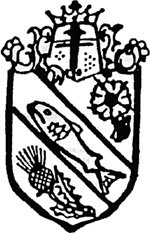Our Detroit based group recently expanded our DBR gaming experience to include provisional army lists for later periods and battles using condensed scale. Along with the battles using the official early period lists, this makes three distinctly different game variants.
Setting aside condensed scale for the moment, full scale games must be segregated into Early and Late periods with the year 1600 serving as an approximate break point. The tactics are entirely different from Early to late; and Late armies will invariably beat Early armies (unless they have battle field panzers known in DBR as war wagons.)
The reasons for this are twofold. Shot has improved from inferior (short range) to ordinary; they now overmatch even superior bow (which disappear from Late lists) and also mow down almost anything they face before they can close for melee. Second, is the conversion of most battle cavalry to Pistols; with their incredibly high factors they render Lancers and Sipahis obsolete. The best force becomes combined groups of ordinary Shot and Pistols of any grade.
 In the Early period, battles are frequently won by Bow which shoot up Cavalry trying to melee or Shot trying to close for a volley. Blades and Pike are worthwhile to hold off Cavalry (without pistols) or to attack Shot, who will only get off one round not three or four.
In the Early period, battles are frequently won by Bow which shoot up Cavalry trying to melee or Shot trying to close for a volley. Blades and Pike are worthwhile to hold off Cavalry (without pistols) or to attack Shot, who will only get off one round not three or four.
Compare this distinct time segregation to DBM or to 7th Edition, in which the troop types do not change dramatically over the entire time spectrum which is much greater than DBR. Some types appear or disappear depending upon the Age, however early lists can beat late lists. Frankly, this phenomenon is one of the criticisms of DBM: "How can my Teutonic Knights lose to some Bronze Age riff raff?" It is easy using light horse and archers.
Through many battles with different players and various lists, we have validated that the Early and Late periods are two mutually exclusive games. Condensed scale is a third derivative. Without summarizing the rules here, and keeping in mind that Late lists are better than Early even in this scale, please consider the following.
Maneuvering is practically impossible. PIPs are constrained to a single D6 (plus one for the only general) Wheeling is effectively reduced since the width of four stands remains at full scale while the distance wheeled is cut in half. The board with is also cut in half, but stand width is not, envelopments are impossible.
What results, is that the defender sets up his single command; the attacker then carefully arranges the matchups of his choice; both sides move slowly straight ahead and the attacker wins (unless he has an Early list vs a Late list) It does not take long or require much planning.
I enjoy playing full scale in the Early period. DBR has mechanics improvements over DBM, but in the long run, I prefer DBM. It offers more variety and rewards good planning. DBR offers three distinct alternatives and reflects the period flavor. If you haven't tried it - give it a go, but watch out for bullets from ordinary Shot and mounted Pistols.
Back to Saga #56 Table of Contents
© Copyright 1996 by Terry Gore
This article appears in MagWeb (Magazine Web) on the Internet World Wide Web.
Other military history articles and gaming articles are available at http://www.magweb.com